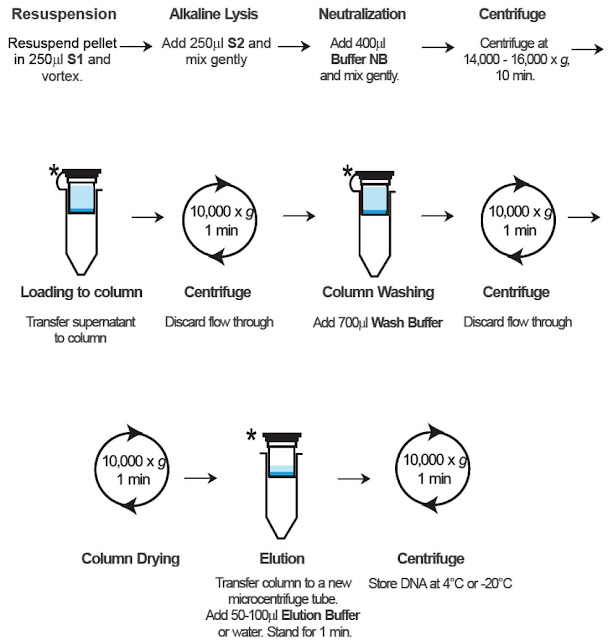Introduction:
The GF-1 Plasmid DNA extraction kit is a device for extraction of plasmid DNA in a fast and efficient purification withoud the need for precipitation or organic extraction from lysates. This kit uses alkaline lysis-SDS method to lyse cells and release plasmid DNA.
This device use a special-treated glass filter membrane fixed into a column to efficiently bind DNA in the presence of high salt. Special byffers provided in the kit are optimized to enhance binding of DNA.
Features:
- Yields up to 20µg of DNA
- Multiple samples can be processed rapidly in less than 30 minutes
- No organic-based extraction required
- Highly pure plasmid DNA ready to use for routine molecular biology applications such as restriction enzyme digestion, PCR, DNA sequencing, ligation, transformation, etc.
- Multiple samples can be processed rapidly in less than 30 minutes
- No organic-based extraction required
- Highly pure plasmid DNA ready to use for routine molecular biology applications such as restriction enzyme digestion, PCR, DNA sequencing, ligation, transformation, etc.
Procedure:
Discussion:
GF- 1 Plasmid DNA extraction kid is designed for rapid and efficient purification of high copy and low copy plasmid DNA withoud need for precipitation organic extraction. Plasmid are often used to purify a specific sequence, since they can easily be purified away from the rest of the renomw. For their uses as a vector, and for molecular cloning, plasmid often need to be isolated.There are several methods to isolate plasmid DNA from bacteria, the archetypes of which are the miniprep and the maxiprep. The former can be used to find out whether the plasmid is correct in any of several bacterial clones faster. The yield is a small amount of impure plasmid DNA, which is sufficient for analysis by restriction digest and for some cloning techniques.In the latter, much larger volumes of bacterial suspension are grown from which a maxi-prep can be performed. Essentially this is a scaled-up miniprep followed by additional purification. This results in relatively large amounts (several micrograms) of very pure plasmid DNA.
 |
| column-assembled collection tube |
 |
| collection tube contain culture |
Conclusion:
This report has identified that GF-1 Plasmid DNA extraction kit is the best,fast and efficient way to extract plasmid from DNA. This kit does not need precipitation or organic extraction from lysates and processes multiple samples in less than 30 minutes. Besides, GF-1 Plasmid DNA suitables for many molecular biology applications such as restriction enzyme digestion, PCR, DNA sequencing, ligation, and transformation.
References:
01:19 |
Category: |
0
comments


























